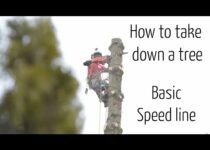How Tree Removal Works
Trees are a beautiful part of any landscape, and many of them are valuable as well. Unfortunately, sometimes trees need to be removed for safety or health reasons. It’s important to understand the process of removing a tree before you decide to take it down yourself or have an arborist do it for you. The way a tree is removed will depend on the size and location of the tree, but in general, there are some basic steps.
The first thing an arborist will do is thoroughly assess the tree. They’ll look at the height, canopy, and location of power lines or structures to determine how best to remove it. If a tree is too close to buildings, power lines, or buried utility lines, it may not be possible to remove it without risking damage.
An arborist will also consider the species of the tree and if it’s healthy or diseased. If a particular species of tree is prone to breakage, disease, or pests, has a lot of problems with root rot, drops messy debris, or inhibits lawn growth, it’s often better to remove the tree rather than try to keep it alive.
Before the actual removal, an arborist will plan out a route that’s safe for everyone involved. This will include clearing away any outdoor furniture, vehicles, fire pits, or other items that could get hit by branches or fallen tree limbs. They’ll also clear a primary and secondary path that can be used if the tree falls in a different direction than planned. The primary path should be as far away from the tree as double its height, while the secondary should be at least a quarter of that distance away.
Once the routes are laid out, the actual removal will begin. If a tree is too tall to safely cut with a chainsaw, it will be cut into sections. This can be a lengthy process, but it will ensure that the entire tree is removed in one piece and that no damage is done to any property.
If the stump is still left behind, it can be ground out or burned. This will usually be an additional charge, but some people prefer to have the stump of their former tree eliminated altogether for aesthetic reasons.
It’s important to note that some cities have regulations about removing trees, and you might need a permit or at least written permission from your city before starting work on it. Checking with your local government can help you avoid fines or even injuries caused by illegal tree removal. It’s always better to leave the work to an arborist who is experienced and fully licensed in your area. If you do decide to remove a tree yourself, it’s important to wear all the necessary safety gear. This includes heavy gloves, a hard hat, ear protection, and safety goggles. It’s also a good idea to have someone nearby to keep an eye on things and warn you of any swaying or falling branches.


